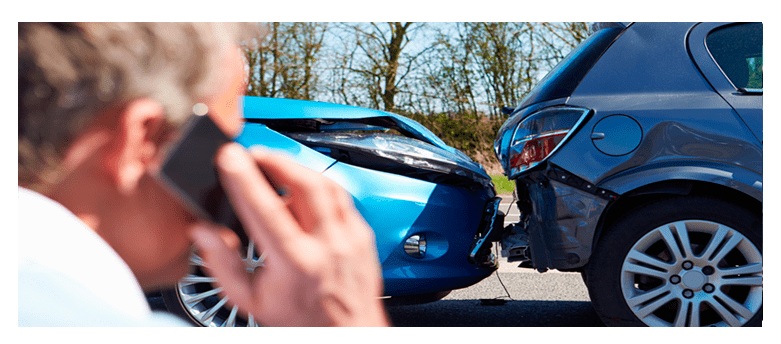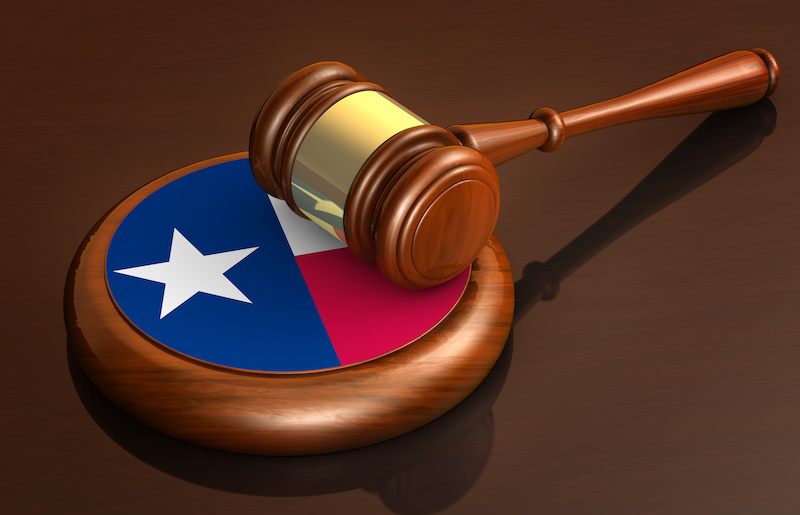
Rear-end accidents frequently occur at intersections, on freeways, and in parking lots across Texas. As more and more drivers engage in multitasking while driving, rear-end accidents are on the rise. According to the National Highway Traffic Safety Association (NHTSA), 28% of all accidents are rear-end collisions. Sadly, the majority of these car accidents could have been prevented if drivers practiced good driving techniques and maintained focus on the road.
When you’re in a rear-end collision, it’s important to have the right car accident attorney to make sure you get the compensation you deserve. The attorneys at the Hernandez Law Group, P.C. have extensive experience working on all kinds of car accident cases and can ensure that you get fair compensation to cover your injuries and medical expenses. Here is more information about rear-end collisions and how our personal injury attorneys can help.
What to Do After a Rear-End Collision in Dallas
Rear-end collisions can range from minor fender benders to serious multi-car collisions. Regardless of the severity of the collision, you will need to take the following steps to prevent further injury and to protect your rights to compensation.
- Move your vehicle, if possible. Many people think they should leave their cars in the exact position of the accident. This is not the case. It is much more important to move your vehicle off the road to ensure that you, your passengers, and any other drivers are safe. If you cannot move your car due to the damage it received or because of the severity of your injuries, then don’t worry about it. In either scenario, turn on your hazard lights to warn other drivers of the accident.
- Check on the other driver and passengers. Make sure that no one else is seriously injured. If anyone is seriously injured, including yourself, call an ambulance immediately.
- Call the police. The police need to be informed of the accident, no matter how minor it may seem.
- Gather information about the accident. As you wait for the police to arrive, gather as much information as you can about the collision. This will help you fill out the police report. Gather the following information:
- The names of the drivers and passengers involved in the collision.
- The contact and insurance information of the other driver/drivers involved.
- License plate numbers.
- Makes and models of the vehicles.
- Witness statements and contact information.
- Location and time of the accident.
- Take pictures of the accident site. These photos can help document the damage to the vehicles and any injuries you sustained.
- Visit a medical professional. Even if you feel fine after an accident, it is still important to get checked out by a healthcare professional. Some injuries may be masked by the adrenaline coursing through your body.
Contact a Dallas car accident attorney. Do not contact the insurance company before you speak with a car accident attorney. Insurance companies are notorious for twisting words around and giving individuals as little money as possible for their accidents. The rear-end collision attorneys at the Hernandez Law Group, P.C. will help you get the full amount you deserve.
Common Injuries From Rear-End Accidents

Rear-end accidents often cause head and neck injuries. Jarring forces cause a whip-like motion and can lead to dangerous and life-changing injuries—even at low speeds. The most common rear-end accident injuries include:
- Whiplash
- Traumatic brain injuries
- Spinal cord injuries
- Soft tissue injuries to the back, neck, and shoulders
- Concussions
- Broken bones
- Lacerations
While deaths are not as common in rear-end accidents, they sadly do still occur. More common, however, are injuries that lead to disabilities and lifelong complications. Whiplash alone can lead to pain, suffering, decreased quality of life, and an inability to continue with your chosen profession. When this occurs, you will need compensation to pay for ongoing medical expenses, surgeries, rehabilitation, physical therapy, lost wages, and pain and suffering.
Determing Fault in a Rear-End Colision in Texas
Fault belongs to the party whose negligent conduct led to the accident which caused injuries and damages to another party. In a rear-end collision, this is typically the driver in the back. Common causes of rear-end collisions are as follows:
- Distracted driving
- Speeding
- Following too closely
- Poor weather conditions
- Drunk driving
If You Rear-End Someone, Are You Always at Fault?
There are certain cases in which the driver in front may be found at fault for the collision. To prove that the driver in front was negligent, it is important to gather as much evidence as possible—including dash cam footage and witness statements. The most common conditions in which the driver at the front may be at fault are as follows:
- When another driver in front cuts the driver behind off.
- When another driver turns or makes a U-turn when the driver behind has the right-of-way.
- When the driver in front is driving recklessly.
- When the brake lights of the driver ahead are not working properly.
- When another driver is at a complete standstill on the roadway.
- When the driver ahead reverses unexpectedly.
Who Is At Fault in Multiple Rear-End Collisions?

When multiple cars are involved in an accident, it becomes more complicated to determine fault. Texas is not a no-fault state, so multiple drivers can be held at fault. It is also a modified comparative negligence state, which means that a percentage of the fault is assigned to each of the drivers involved in the accident. If someone decides to sue for damages, the plaintiff must be found less than 50% at fault for the wreck to receive compensation.
In most cases, the driver in front of a multiple-car collision will not be at fault; however, the same guidelines listed above may cause them to be assigned at least part of the blame. On the other hand, the rearmost driver in the multi-car collision will likely be assigned the majority of the blame for the vehicle wreck.
Compensation You Can Recover After a Rear-End Collision
The injured party can potentially recover compensation for the following damages:
- Current and future medical expenses
- Property damages
- Lost wages
- Pain and suffering
- Emotional distress
- Loss of consortium, in cases of wrongful death
Why You Should Hire a Car Accident Attorney in Dallas
The days following a car accident are stressful as you try to put together the broken pieces. Recovering from your injuries, getting your vehicle fixed/replaced, and dealing with the insurance companies can be overwhelming. A car accident attorney can help you focus on your recovery while they handle dealing with the insurance companies and seeking compensation from the liable party.
You will want to hire a rear-end collision attorney who has experience and a successful track record to back them up. The Hernandez Law Group, P.C. has been Dallas, Texas’, and the surrounding areas’ go-to-resource for legal aid after a car accident since our founding in 1999. We have helped countless clients recover millions of dollars after their accident. Having one of our knowledgeable attorneys on your case means that you will have guidance in:
- Investigating your case with the help of experts, such as accident reconstructionists, when necessary.
- Guiding you through the accident claim process.
- Filing a lawsuit if the at-fault party refuses to settle fairly.
If you have been involved in a rear-end collision, contact the attorneys at the Hernandez Law Group, P.C. Our team offers free, no-obligation consultations to help you determine how much compensation you deserve after your accident. Led by Juan Hernandez, one of 2% of attorneys in Texas board-certified in Specialization of Personal Injury Law, your case is in the best hands. Don’t try to navigate the legal system alone. Instead, partner with the family of attorneys who will fight for yours.
Rear-End Collision FAQs:
The amount of compensation you receive will depend on the following factors:
– The severity of your injuries.
– The extent of damages to personal property.
– The amount of lost income you may experience.
– The effectiveness of your legal representation.
– Whether you experienced emotional distress from your accident.
– Fault allocation.
No. In some circumstances, the driver in the front may have been negligent in their actions. This is often true when the driver in front performs the following behaviors:
– Cuts the driver behind them off.
– Makes a turn or a U-turn when the driver behind has the right-of-way.
– Drives recklessly.
– Has broken brake lights.
– Has come to a complete standstill on the roadway.
– Reverses unexpectedly.
Whether you’re behind or in front of another vehicle, there are certain steps you can take to avoid a rear-end collision:
– Keep a safe following distance.
– Pay attention to other cars.
– Drive carefully in bad weather.
– Keep your eyes on the road.
– Pay attention to road conditions.
– Stay off the roads if you’re impaired.
– Move off the road if your car malfunctions.
– Maintain a safe speed.
Yes. You can still sue after a rear-end collision even if you were not physically harmed in the accident. You can seek compensation for property damage to your vehicle.
Certain states require drivers to carry “no-fault” insurance. This covers the injuries of a driver and their passengers after an auto accident. This type of coverage—known as Personal Injury Protection (PIP)—is not required in Texas. However, it is available as an add-on to your personal liability coverage.
